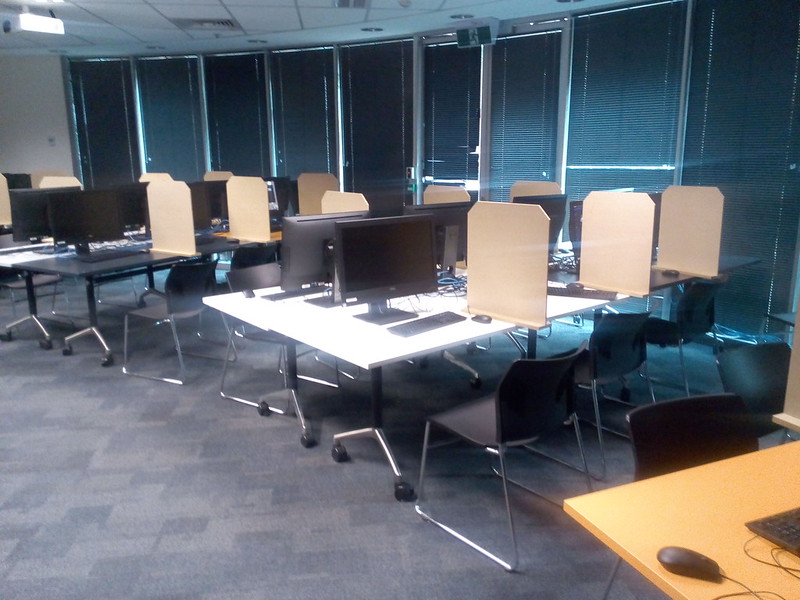Transparent Partitions in Classrooms
Some Saudi-Arabian universities use partition-rooms to separate female students from male teachers. The teacher is behind a glass wall, and has a separate doorway to the outside of the building, so they are never in physical contact with students. However, that would require extensive building work, for limited return.
A simpler measure would be the type of transparent plastic screens now installed at supermarket checkouts. These have been used not only in front of human cashiers, but between self-serve checkouts. The same could be done in lecture theaters, with a screen in front of the lectern.
In laboratories, a screen could be placed between each student. Removable screens have already used in the Australian National University's computer labs for examinations. The difference would be that the new screens would be transparent. It may be possible to design a screen which is partly transparent so it can server both purposes: part of the partition would be transparent, so the student could see the person next to them, and the instructor. But part would be opaque, louvers, lattice, or translucent, so the student could not see what was on others desktops and computers.
Online Educaiton Works
However, before investing in new measures to bring all students to campus, it needs to be kept in mind that distance education online is generally as effective as face to face instruction. There is a body of literature on this "No Significant Difference" phenomenon. So it should not be assumed that students education is being harmed.
School systems and universities already had online distance students, so had content, tools and techniques. The problem was to familiarize the teachers and students with these, and provide access. That is relatively simple, compared to rebuilding classrooms.
This is not to say online study is the same as face-to-face, and benefits everyone equally. Dr Cathy Stone from University of Newcastle has produced National Guidelines for Improving Student Outcomes in Online Learning.
My online students do as well online as as in their face to face courses. However, these are students who chose to study this way, using techniques developed to keep the students studying, with courses designed for this, and an instructor trained to teach this way.
The world is, in effect, conducting a large scale experiment, to see if students forced online, with teachers having only a small amount of training in this mode can produce comparable results. So far it is going well where I teach, but that is a very well resourced university, with a cadre of experienced online educators, and some of whom spent years preparing for this emergency.
Simplify Assessment
Perhaps the most useful thing which could be done right now is simplify the assessment system to try to counter the obsession which students, parents, and universities have with grades. Outside the education system, in the workplace, how well you did at school, or university, doesn't matter, as long as you passed. The vocational education system has long used an approach were students are assessed as "competent", or "not yet competent".
* ps: While "social distancing" is the term in common use, I suggest "physical distancing" would be better, as we want people to be socially close, while physically isolated, for their own mental health, as well as to be as economically productive as possible.

No comments:
Post a Comment